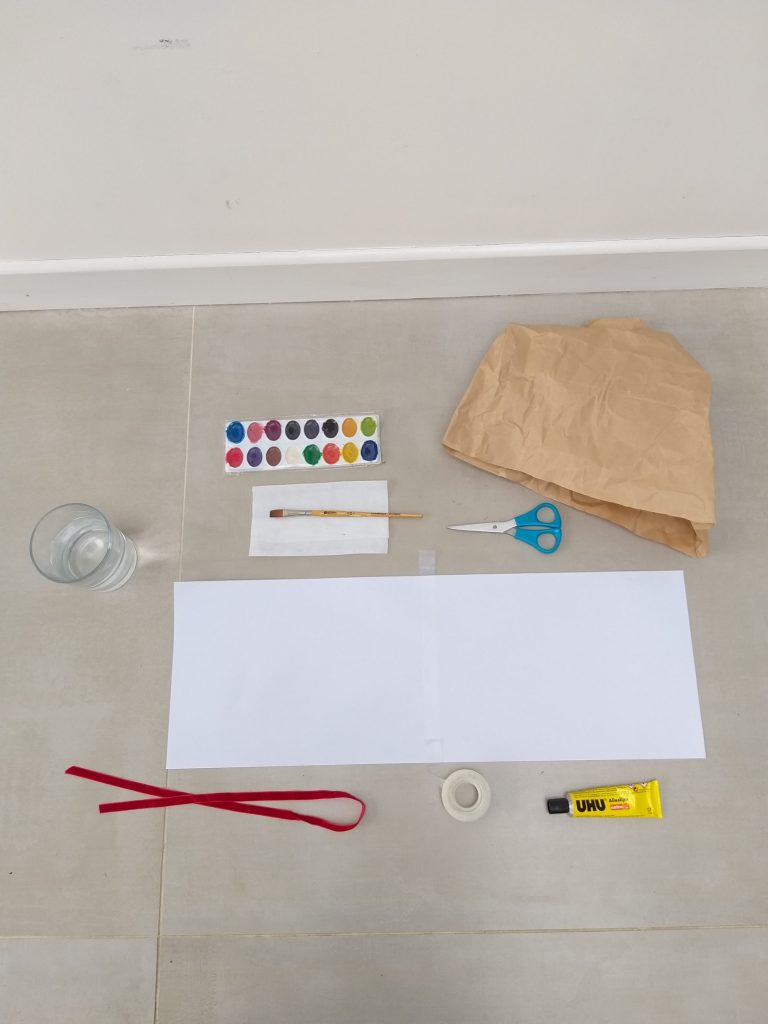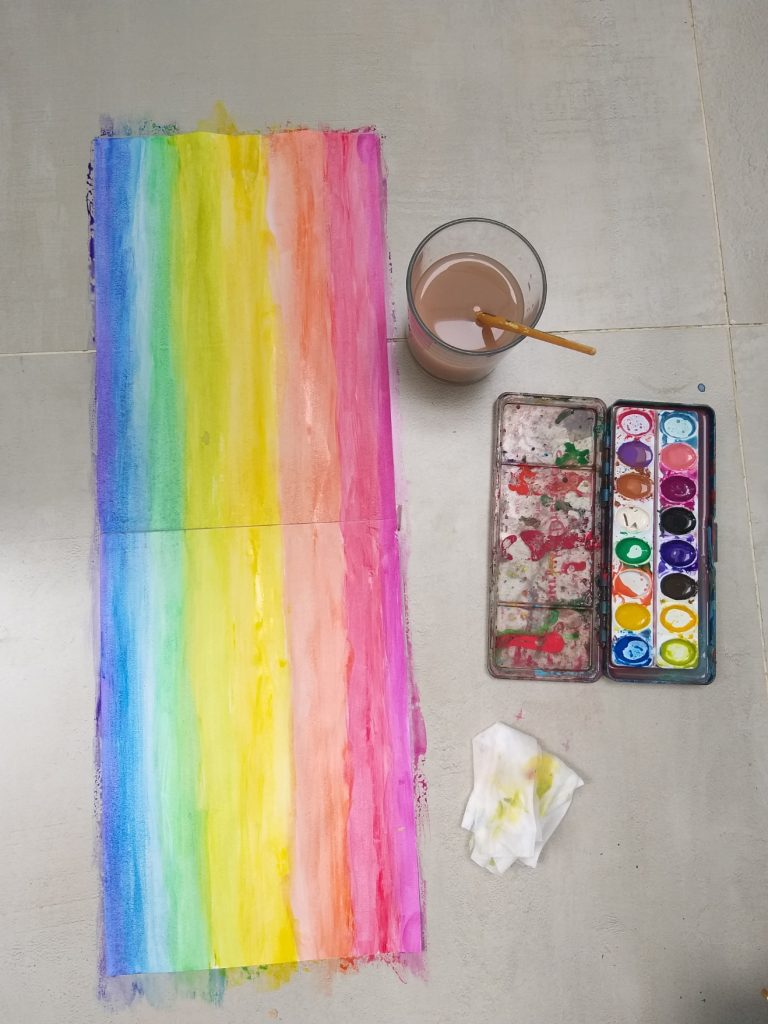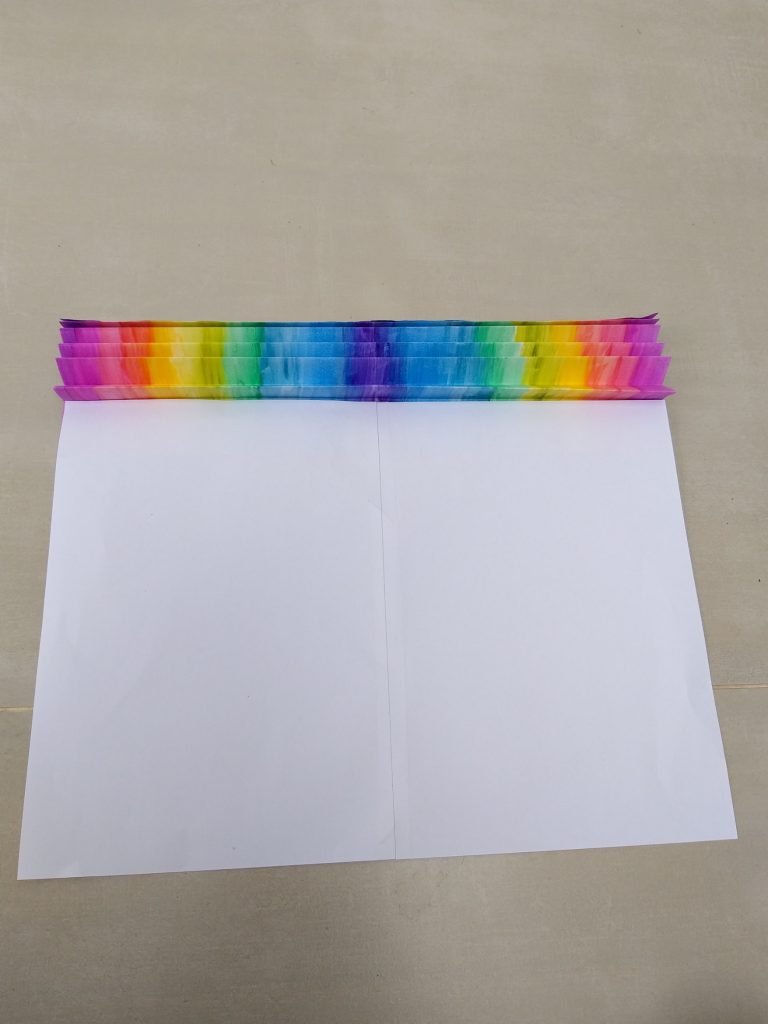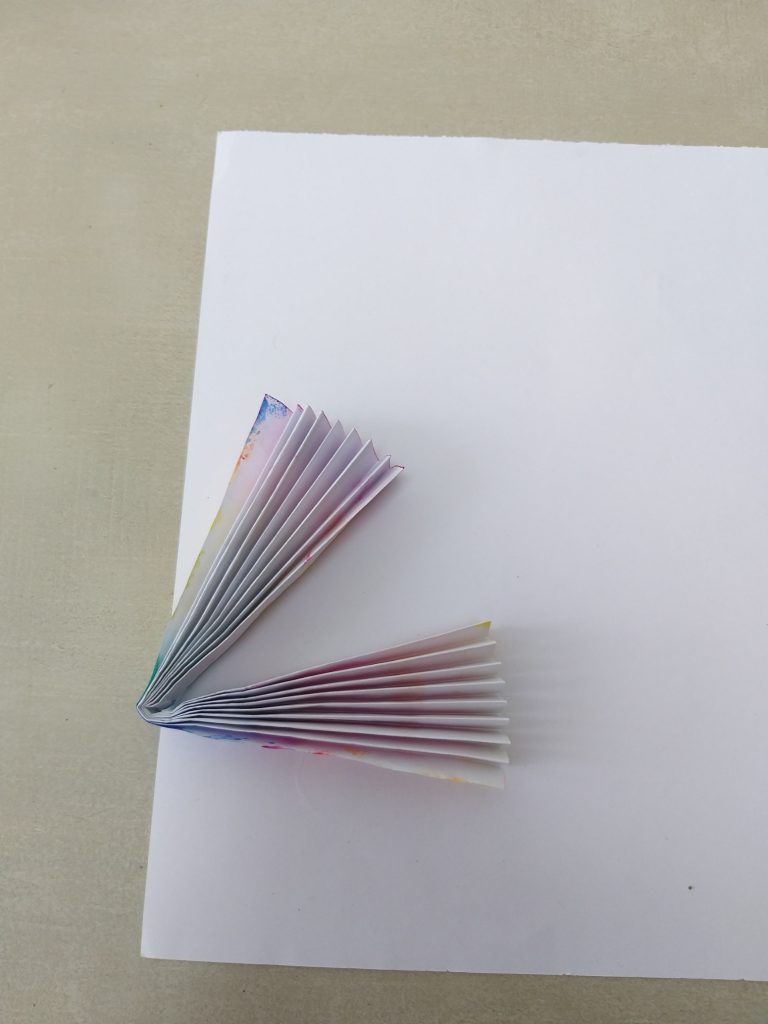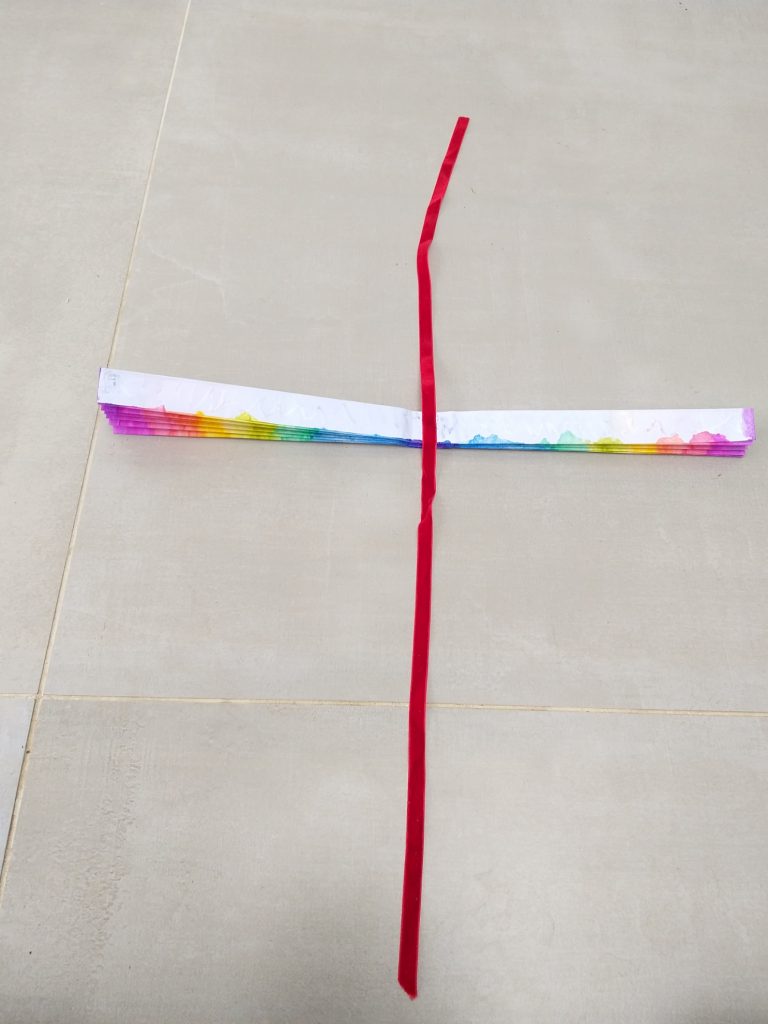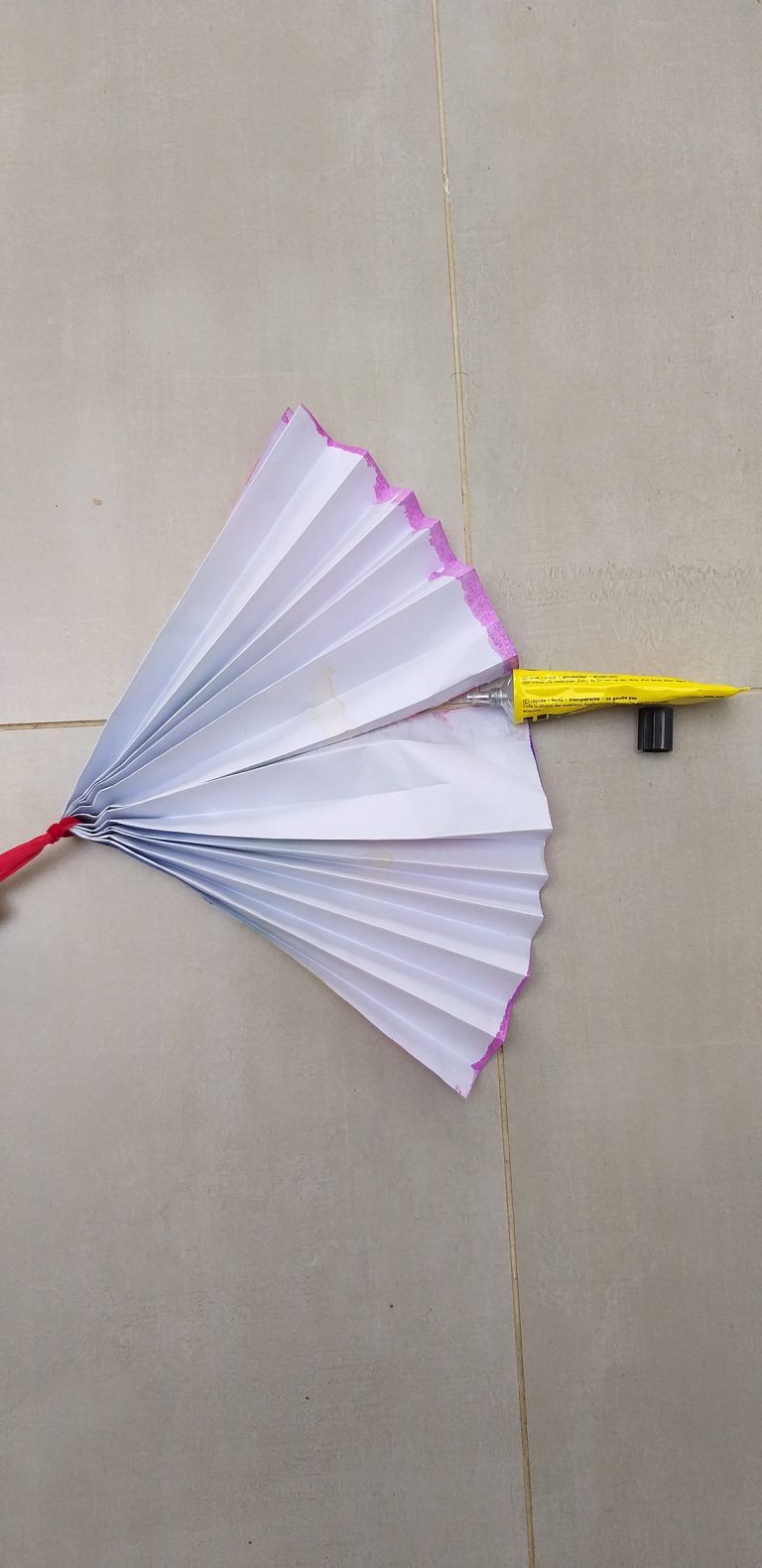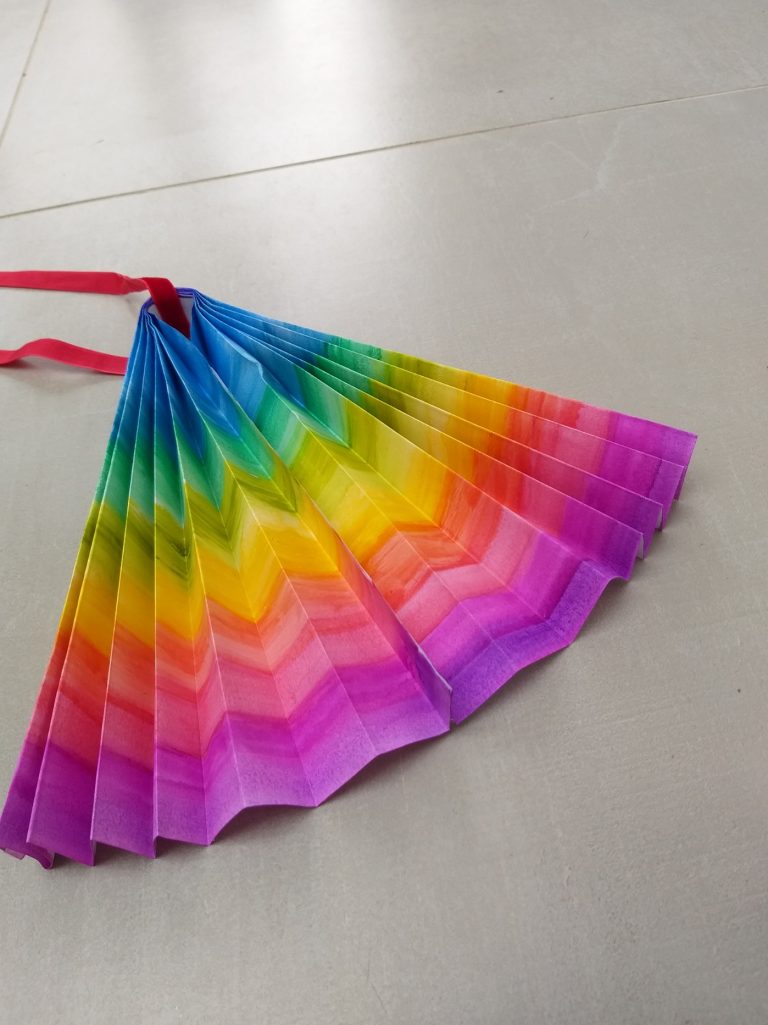This week we invite you to make your own rainbow hand fan for Pride 2020. We’ve drawn inspiration from the work of Patrick Hughes in the IMMA Collection. For this project you’ll need paper, paint, a brush, sticky tape, some glue, scissors, paper craft, ribbon and water.
Materials needed:
- 2 white A4 paper pages
- Water based colours
- 1 paintbrush (larger is easier)
- Sticky tape
- Glue
- Scissors
- Paper craft
- Ribbon
- Glass of water
How to do:
- Stick two paper pages together side by side with tape. Paint your coloured stripes the whole length, being generous with water to smooth out the colour gradations. Check that the coloured bands have the same broadness at both ends.
- Wait for the painted paper to dry completely.
- Separate the two pages and tape them back as a square.
- Fold delicately, keeping the folds vertical and the same width. You can use a page of paper or a long ruler to keep them straight and flat.
- Secure a long ribbon in the middle of the folded paper and fold it in half.
- Glue and press the middle edges together; then make a knot to secure the ribbon.
- Cut a strip of paper craft, three times the width and slightly longer than your folded fan. Glue it together so it is like a tube. Then glue one end, make a hole in it to put the ribbon through, and cut a semi-circle at the other end.
You have now finished your hand-held paper fan, with its own protective pocket for the party! Now, you can keep yourself cool in the Parade, show off and enjoy yourself!
We drew inspiration for this project from the art of Patrick Hughes. In the 1970s, Patrick Hughes used the motif of the rainbow in a series of prints and paintings, investigating perception and illusion, for example Pile of Discarded Rainbows, 1972, and Wet Rainbow, 1978. You can see one of these type of artworks in IMMA’s Collection: “Present” Rainbow, 1978.
We also drew inspiration from the tradition of hand fans, particularly from East Asia. From Wikipedia: The oldest existing Chinese fans are a pair of woven bamboo, wood or paper side-mounted fans from the 2nd century BC. A particular status and gender would be associated with a specific type of fan. The Chinese dancing fan was developed in the 7th century. The earliest visual depiction of fans in Japan dates back to the 6th century AD, with burial tomb paintings showed drawings of fans. The folding fan was invented in Japan, with date ranging from the 6th to 9th centuries. It was a court fan called the Akomeogi (衵扇, Akomeōgi) after the court women’s dress named Akome. The folding fan came into popularity during the Ming Dynasty between the years of 1368 and 1644. In the late 16th century, Portuguese traders introduced it to Europe and soon both men and women throughout the continent adopted it. Simple Japanese paper fans are sometimes known as harisen, and China zhé shàn.

